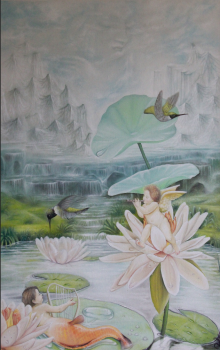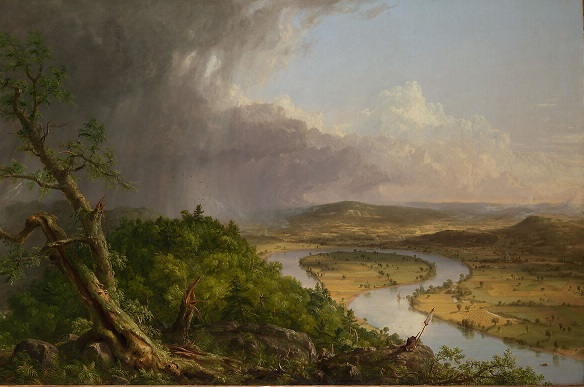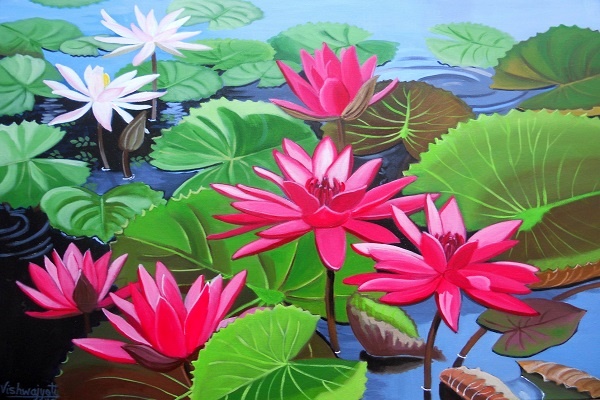
The goal of landscape painting is to depict natural landscapes, such as mountains, valleys, rivers, woods, and other outdoor features. It has a lengthy and rich history, with instances going all the way back to the dawn of time. But throughout the European Renaissance, when painters started to show the natural world with more accuracy and realism, landscape art became significantly more popular.
The beauty of nature may be captured, emotions can be evoked, and the link between people and their environment can be explored via landscape paintings. It permits a range of creative interpretations, from realistic to abstract or exaggerated pictures of nature.
Famous landscape painters have been essential to the growth and development of the art world. In addition to capturing the splendor of nature, their works have impacted creative movements, other artists, and the preservation of the world's cultural legacy. Read the blog to learn the essentials of their significance.
Claude Lorrain
Claude Lorrain, sometimes known as Claude Gellée, was a well-known landscape painter of the Baroque era. He was born in France around 1600. He is renowned for his idealized and lyrical landscape paintings, many of which feature settings taken from ancient myths or biblical stories. Lorrain's works had a significant impact and established a benchmark for landscape painting in the 17th century.
The ambient qualities, soft golden light, and painstakingly recreated details were the focal points of Lorrain's creative vision. One of the founders of the classical landscape movement, he was known for his ability to infuse a feeling of harmony and peace into his landscapes. Particularly during the Romantic era, the works of Lorrain had a significant influence on later generations of landscape painters.
Iconic masterpiece: "Landscape with the Marriage of Isaac and Rebecca"
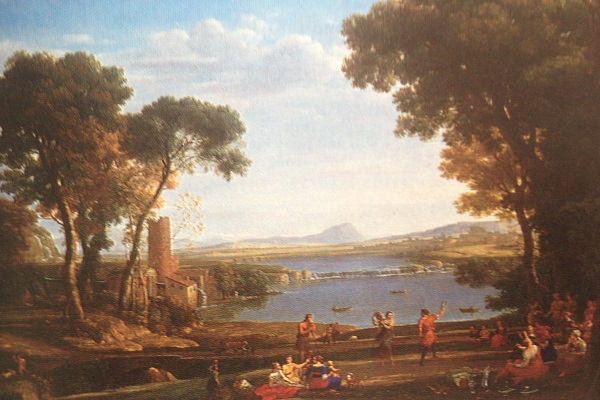
"Landscape with the Marriage of Isaac and Rebecca" (sometimes referred to as "The Marriage of Isaac and Rebecca"), which was painted by Claude Lorrain in 1648, is one of his most well-known pieces. In this work, Lorrain demonstrates his talent for fusing a biblical story with a tranquil, beautiful setting.
The marriage of Isaac and Rebecca from the Book of Genesis is shown by Lorrain in the picture. The countryside may be seen in the background, with the pair visible in the foreground. The gentle light of the setting sun, which casts a pleasant glow over the environment, is expertly captured by Lorrain. The picture combines traditional architectural components with lush greenery, a serene river, and human figures to achieve a harmonic balance between the two.
The painting "Landscape with the Marriage of Isaac and Rebecca" is a prime example of Lorrain's skill at capturing the idyllic beauty of nature and his capacity to give his works a tranquil, lyrical feel. The piece displays his impact on other landscape painters as well as his contribution to the growth of the genre.
B. J.M.W. Turner
Jacob Mallord English landscape painter William Turner sometimes referred to as J.M.W. Turner, was born in 1775. Turner is well-known for his particular style, which is highlighted by his aptitude for capturing the fleeting effects of light and mood. He was a pivotal participant in the Romantic movement and contributed significantly to the change from realistic landscape painting to a more expressive and atmospheric style.
Turner's paintings frequently included tumultuous seascapes, storms, and landscapes with a concentration on light and color. To capture the constantly shifting moods of nature, he employed powerful brushstrokes and a vivid palette. With his distinctive technique, Turner pushed the bounds of depiction, progressively moving away from exact realism and toward interpretations that were more emotive and evocative.
Iconic masterpiece: "The Fighting Temeraire":
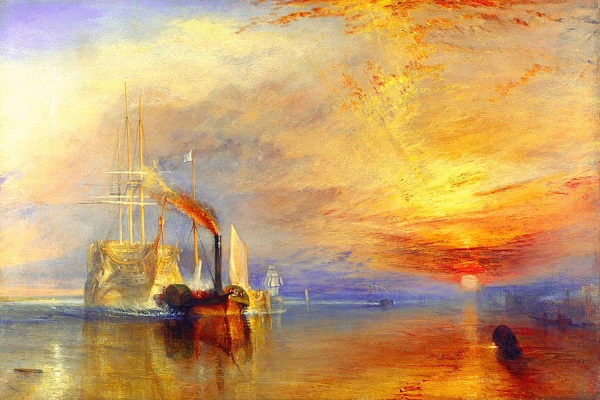
Finished in 1839, "The Fighting Temeraire" is one of J.M.W. Turner's most well-known works of art. The artwork depicts the last voyage of the renowned cruiser HMS Temeraire, which was being towed away to be demolished after playing a crucial role in the Battle of Trafalgar in 1805.
Turner shows an outdated battleship being dragged by a steam-powered tugboat on the River Thames during a colorful sunset in the painting. The beautiful sailing ship loses way to contemporary industrialization in this image, marking the passing of an era and invoking feelings of nostalgia and regret. Rich color palettes, dramatic lighting, and expressive brushwork all contribute to the composition's emotional impact.
The painting "The Fighting Temeraire" exemplifies Turner's ability to convey the majestic grandeur of nature as well as his commentary on the passage of time and changing social mores. The artwork exemplifies his command of light, mood, and his capacity to give his creations rich emotional and symbolic content.
Read more: Breathtaking Landscape Paintings by Famous Artists of India
Claude Monet
An influential member of the Impressionist movement, Claude Monet revolutionized landscape painting with his own style. Impressionism sought to portray transitory moments as well as the ways that light and color affected the natural world. Loose brushwork, fragmented color, and a focus on portraying the constantly shifting characteristics of light and atmosphere are characteristics of Monet's landscapes.
Monet is frequently painted outside, or en plein air, moving swiftly to capture the momentary sense of a subject. His landscapes mostly included commonplace objects like gardens, meadows, and water features, with a concentration on the interaction between light and color, and form. Instead of exact portrayal, Monet's artwork aimed to generate a feeling of atmosphere and sensory experience.
Iconic masterpiece: "Water Lilies":
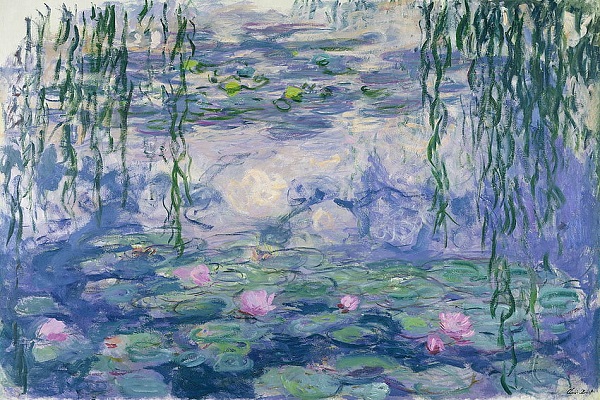
The "Water Lilies" series, which was produced between 1899 and 1926, is one of Claude Monet's most recognizable body of work. These paintings show Monet's garden at Giverny, especially the water lily pond and the greenery that surrounds it.
Monet's interest in the effects of light and color is best demonstrated through his "Water Lilies" series. His ability to capture reflections on the water's surface, the interaction between light and shadow, and the interaction between water and nature is evident in the works. Viewers are drawn into the serene serenity of the setting by Monet's free brushstrokes and fragmented color, which give the painting a feeling of movement and mood.
"B Water Lilies" is evidence of Monet's talent for conveying a sensory experience rather than an exact picture of a subject. Generations of artists were impacted by the series, which constituted a significant turning point in the evolution of contemporary art.
Also Check: Best Landscape Artists and their Works
Vincent van Gogh:
The powerful and passionate style of Dutch post-impressionist painter Vincent van Gogh was well-known. Van Gogh's landscapes were distinguished by their vivid hues, brisk brushstrokes, and emotional ferocity. Instead of an exact reproduction, he aimed to communicate his inner feelings and unique perspective of the natural world.
Landscape paintings by Van Gogh frequently used rural settings, such as open fields, rural areas, and starry nights. He portrayed the emotional and psychological qualities of the landscapes he viewed using strong, contrasting colors. Van Gogh's landscapes gained energy and movement because of his expressive brushwork, which is evident in his thick and textured paint application.
Iconic masterpiece: "Starry Night":
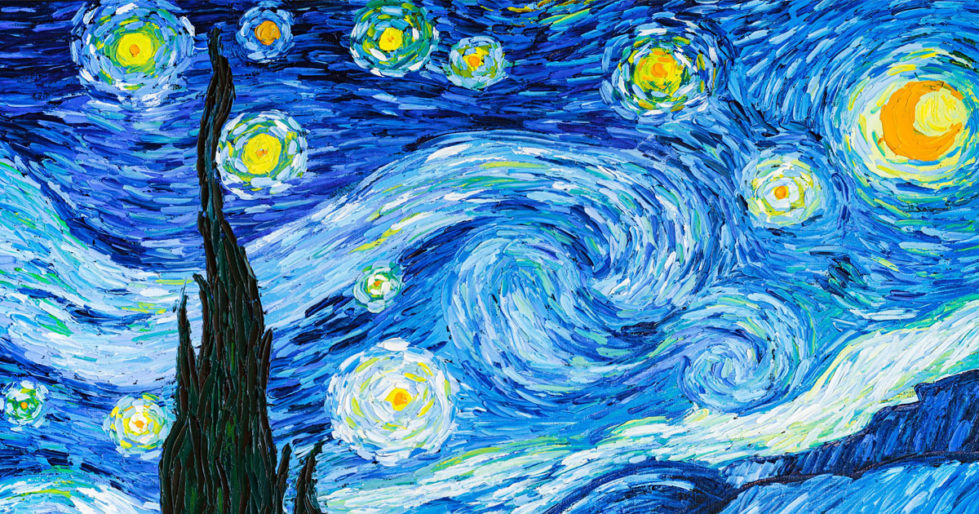
The 1889 painting "Starry Night" by Vincent van Gogh is regarded as his most well-known and iconic work. In the artwork, a sleeping settlement is seen over a nighttime landscape with a whirling sky full with stars.
Van Gogh's individual style is obvious in "Starry Night," as seen by his expressive brushwork, daring color palette, and compelling structure. The sky conveys movement and emotional intensity with its flowing patterns and brilliant colors. With its stylized shapes and warm colors, the hamlet below contrasts with the pulsating sky to provide a sense of peace amidst a celestial extravaganza.
The painting "Starry Night" is a perfect illustration of van Gogh's talent for imbuing landscapes with his inner feelings and for forging a potent visual language. His distinct artistic perspective has been immortalized in the artwork, which also greatly influenced later generations of painters.
Thomas Cole
An influential school of landscape painters in the 19th century, the Hudson River School was founded by Thomas Cole, an American artist of English descent. In particular, the Hudson River Valley and its surroundings were frequently included in the landscape paintings of the Hudson River School. With an emphasis on the sublime and the relationship between humans and the natural world, they sought to convey the grandeur and spiritual elements of nature.
Cole's approach to painting was based on the idea of the "divine in nature." He thought that because God is directly reflected in nature, he could use landscape painting to share spiritual and moral lessons with his audience. His images frequently portrayed untouched wildness, striking vistas, and awe-inspiring beauty.
Iconic masterpiece: "The Oxbow":
One of Thomas Cole's most well-known works, "The Oxbow" (also known as "View from Mount Holyoke, Northampton, Massachusetts, after a Thunderstorm") was finished in 1836. The image is a classic example of Cole's skill in capturing the magnificent and dramatic elements of the American environment.
The Connecticut River Valley is shown in "The Oxbow" after a thunderstorm. A tumultuous, dark wildness is on the left side of the composition, while a serene, manicured landscape is on the right. The conflict between uncontrolled nature and human intervention is symbolized by this juxtaposition.
The relevance of the picture is found in its examination of the interaction between mankind and nature. "The Oxbow" highlights the need of protecting the wild nature and expresses Cole's worries about the effects of industrialisation. It demonstrates his contribution to the cause of protecting American landscapes.
Interesting Blog: 5 Unique Ways of Projecting Landscape Art
Frederic Edwin Church
American landscape painter Frederic Edwin Church was a well-known figure in the Hudson River School and Thomas Cole's successor. Grandiose and expansive vistas were a hallmark of Church's art, frequently drawn from his considerable travel and study.
Church had a strong desire to photograph isolated and strange settings. He frequently painted sweeping views, unusual geological formations, and dramatic panoramas. By taking viewers to distant locations and immersing them in the beauty of nature, he hoped to arouse awe and amazement in them.
Iconic masterpiece: "The Heart of the Andes":
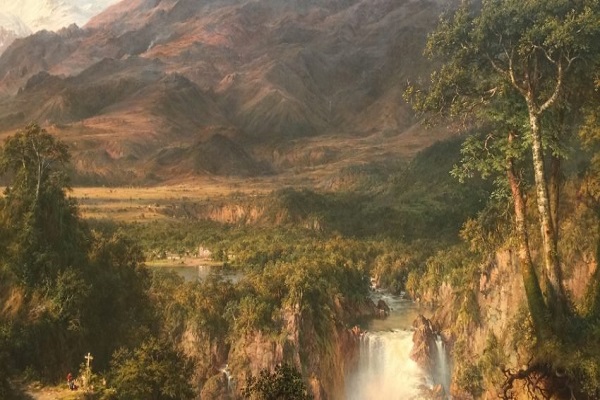
Completed in 1859, "The Heart of the Andes" is among Frederic Edwin Church's most renowned and significant paintings. Church's ability to convey depth and mood as well as his rigorous attention to detail are both demonstrated in this picture.
The rich and clean environment of "The Heart of the Andes" was inspired by Church's travels to South America. The artwork depicts a sweeping panorama of the Andes Mountains, complete with ornate flora, glistening waterfalls, and towering peaks. The way that Church uses light and color provides a brilliant and majestic mood.
The exploratory themes in "The Heart of the Andes" and the Church's talent for capturing the majesty and beauty of the natural environment are both well exemplified in this work. Viewers' immersion was furthered by the use of a diorama-style backdrop and a painting shown in a specially made frame.
Georgia O'Keeffe
American modernist artist Georgia O'Keeffe is recognized for her distinctive style of landscape painting. O'Keeffe frequently abstracted and exaggerated natural forms in order to highlight their minute features and convey feelings of intimacy and transcendence.
O'Keeffe's landscapes, especially those of the American Southwest, featured magnified flowers, desolate settings, and up-close views of organic elements. She produced a feeling of visual impact and emotional resonance through her use of rich colors, simple shapes, and forceful compositions.
Iconic masterpiece: "Red Hills and Pedernal":
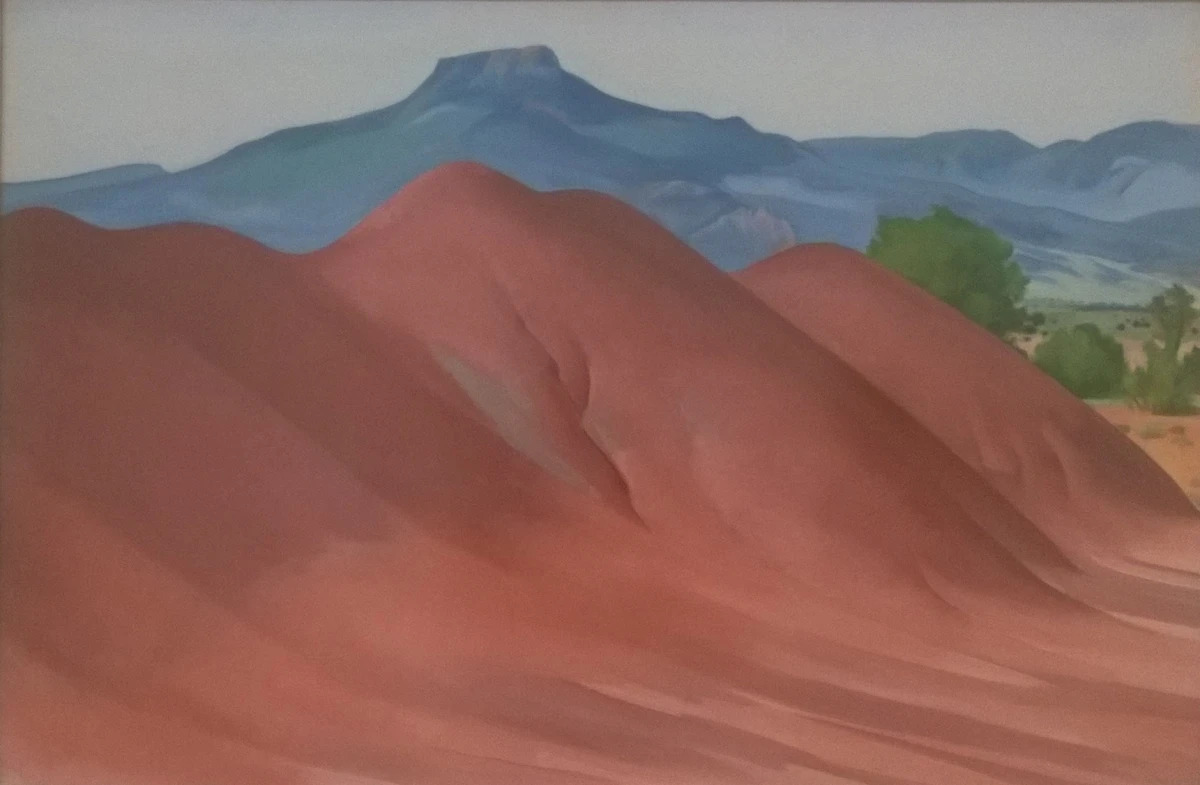
Completed in 1936, "Red Hills and Pedernal" is one of Georgia O'Keeffe's most recognizable works of art. Through the use of vibrant colors and straightforward shapes, O'Keeffe is able to perfectly express the spirit of the Southwest region in this painting.
O'Keeffe depicts the iconic Pedernal mountain and the red hills of New Mexico in "Red Hills and Pedernal," a common theme in her art. The vivid colors, abstracted forms, and smooth textures of the artwork evoke the stark and dry beauty of the desert environment.
O'Keeffe defied conventional portrayals with her distinctive vision and avant-garde approach to landscape painting, and she had an impact on later generations of painters. "Red Hills and Pedernal" is a superb example of her capacity to abstractly and deeply personalize the core of the natural world.
Ansel Adams
American photographer Ansel Adams is famous for his groundbreaking work in landscape photography. In order to capture the majesty and beauty of the natural world, he raised photography to the status of fine art.
Adams frequently portrayed the untainted wildness of the American West, especially the national parks. His images were distinguished by their technical excellence, flawless composition, and command of tone range. Adams carefully managed every step of the photography workflow, from picture capture through developing and printing, producing images that are both aesthetically striking and richly detailed.
Iconic masterpiece: "Moon and Half Dome"
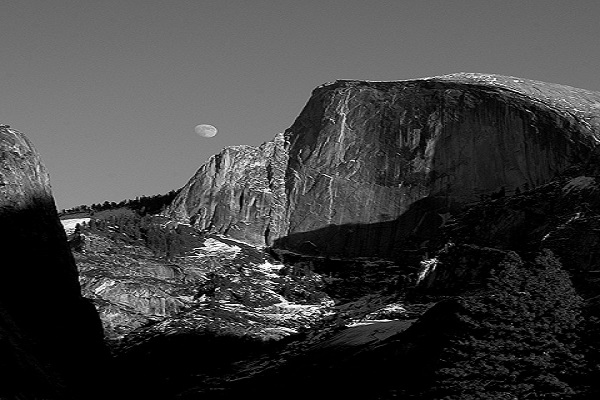
One of Ansel Adams' most well-known images, "Moon and Half Dome," was captured in 1960 at Yosemite National Park in California. Adams' skill at capturing light, shadow, and texture in the environment is on full display in this picture.
Adams' photograph, "Moon and Half Dome," shows the moon rising above the magnificent Half Dome rock structure. A sensation of breathtaking beauty is produced by the contrast between the gentle moonlight and the contrasting sharp granite cliffs. Adams' painstaking printing method highlights the image's fine details, tonal range, and depth.
The artistic value of Adams' contributions to landscape photography is immense. Through his images, he not only promoted environmental protection while capturing the beauty of the natural world. "Moon and Half Dome" is evidence of both his technical prowess and his capacity to inspire awe and a sense of connectedness to the natural world.
Read More: Must Buy Landscape Paintings for Every Nature Lover
Final Thoughts
To sum up, the field of landscape painting provides an enthralling window into the splendor of nature and the artist's perception of it. Visit IndianArtIdeas to peruse a large selection of exquisite landscape paintings. This online art gallery offers a forum to appreciate India's rich cultural legacy and artistic ability by showcasing a wide variety of current Indian art. Explore the wonders of landscape painting and become engrossed in the alluring beauty of nature by viewing the beautiful paintings on IndianArtIdeas. Begin your creative journey right now!











